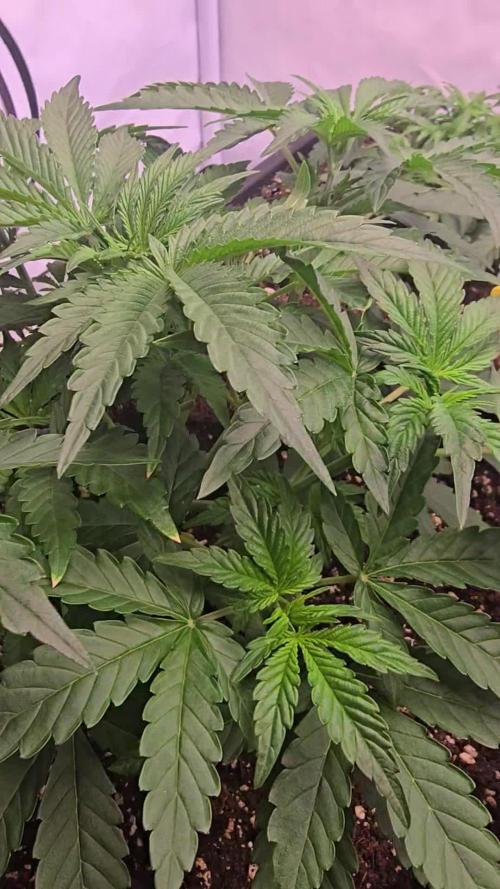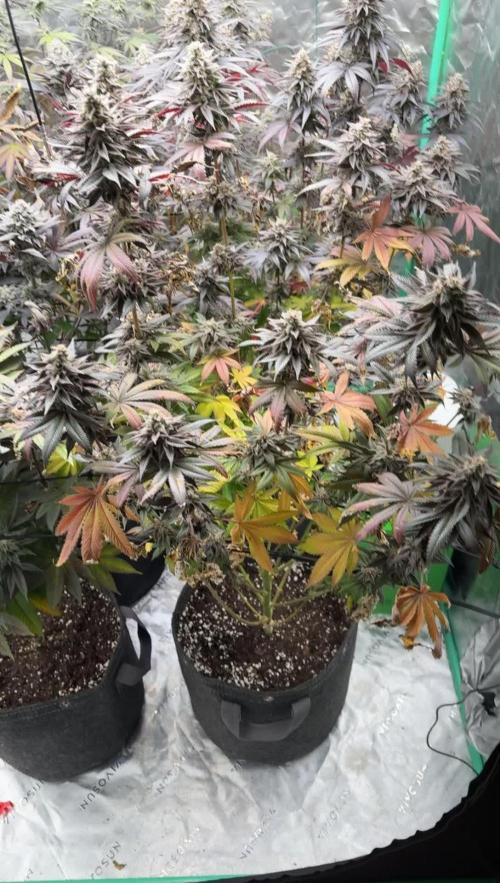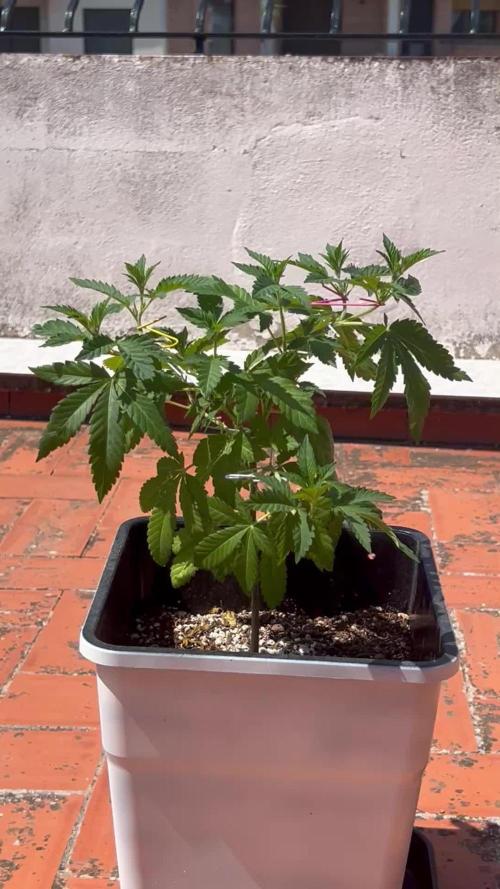The Grow Awards 2026 🏆 

























Likes
7
Share


@wascanna
Follow
👹 Oni Seed Co.
🍭 Dub Trop BX1 // Dubble Trop x Tropicanna Cookie F1
🍓 Straw-Picanna // Strawberry Bananna x Tropicanna Cookies
🌿 Tropicanna Kush // SFV OG x Triangle Kush
🔥 Sunburn // TKT (Triangle Kush x Tangie) x Tropicanna Cookies
🍁 BLOOM WEEK 8
Final push for the 3 bushes (Sunburns and the Dub Trop) this week.
Likely chop this week and another week or 2 for the tall Strawpicanna's and Tropicanna Kush.
Likes
24
Share


@FrostyCloudzz
Follow
Woche 5 hat gestartet und ihn geht es prächtig sie verändern sich täglich, eine zeigt Mängel auf aber nur minimal.
bin gespannt noch circa zwei Wochen Wachstum dann in die Blüte.
Die Girls wurden langsam LTS gebunden und topping wurde gemacht bei jeder
Purple Punche wurde durch random seid ersetzt sieht bis jetzt gut aus
Likes
37
Share


@DaddyPrime2
Follow
4/7/24 added worm casting(finally) lol
4/8 took off lowest node
4/10 they may have slower growth. Worried about my humidity at night.
4/11 growing more wide now. Trying to tuck leaves to show more of the nodes but they aren’t quite tall enough
4/14 day 21 end of week 3. Both phenos are thick and fluffy. I’m impatient and curious and decided to top one of them.
Ps. Early this week, they have shown pistils but it may just be showing sex
Likes
18
Share


@HippyHemulen
Follow
Weather is starting to get warmer finally and now we can see she start growing little bit. Nothing issues or anything just little bit worried if she start flowering like in next week cause its already 3 weeks veg to autoflower. 😊
Likes
13
Share


@pureblaze420
Follow
I'm a bit disappointed with the yield but overall its a great strain, smells great!
My yield could have increased if all the plants were the same size. Heisenhound tastes like Master Kush, Def a good auto kush
Likes
3
Share


@ThatsmyGrow
Follow
This week is special, i got the New System from ac infinity. I need to get comfort with everything, but its realy high Qualität.
For now we can get the best vpd for the lady, so i hope the best for the grow.
Likes
103
Share


@JuanHaze_Arg
Follow
3era semana. El efecto de "Amazonia" se ve reflejado en las hojas hacía arriba adorando al sol. Se la ve linda y creciendo con fuerza. Al menos 0.5cm por día.
Finalizando el día 19 de su crecimiento le hice una poda apical. Por su estructura sativa y mí poco espacio decidí hacer topping y poner hacer un guiado con lst para luego poner la malla de scrog.
Día 21 me olvidé de regar y se achicharraron las dos primeras hojas por deshidratación. Después de regar se la ve linda y feliz.
Likes
15
Share


@Drtomb
Follow
Been flowering now for 6 weeks, starting week 7. Smells become more and more potent. Can't wait to sample the finished product.
Likes
2
Share


@TEAM_Piff_Paff
Follow
The first white pistils can clearly be seen now. I guess that's why she's getting more yellow leaves at the base but this also means that she is in the preflowering phase :)
Due to this and the fact that the weather is great, she needs more water now.
Aside from that she is starting to smell a bit more in the morning and her branches are turning red.
Likes
2
Share


@TTerpz
Follow
Start of week 13
(Day 49 of flower)
9/20/25
Fed with 1/4 strength of nutrients: 9/24/25
Flushed with water 9/26
Likes
9
Share


@Headies
Follow
This is the beginning of each week. So I flushed them and switched nutrients. They were mag deficient, nitro toxic. Not PH actually. I'm adding co2 next week after I seal the room. I think I need to back the PAR down to 800 but they are still alive and it's over half way done.
How any more weeks? I thought this was a 65 day auto. Hydro in a 5 gallon pot could add up to three weeks I heard with Autos. could these go 12 weeks total?
Likes
5
Share


@CookiDoggi
Follow
The plant is looking great!! I've done super cropping (hst) with some clips and it's working perfectly!! I think she's starting to go into preflower but at the moment there are no signs of pistiles or strong odour.
Likes
25
Share


@pifflestikkz
Follow
Day 45
17/08/24 Saturday
Another watering today using de-chlorinated tap water pH 6 only.
Lemon skittles and XXL ammo are tall, bud nice and smelly plants!
The Kabul is more of a dense compact build, I'm excited to see what they grow into 😍
Picture and video update ✌️ 💚
Day 48
20/08/24 Tuesday
Feed today using de-chlorinated tap water pH 6. With Plagron PK13-14 and power buds.
Noticing the stretch stop, and now packing out there bud sites 💪💚
Vid + pic update ✌️💚
































